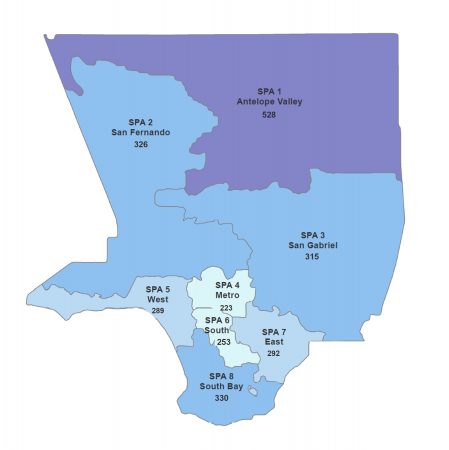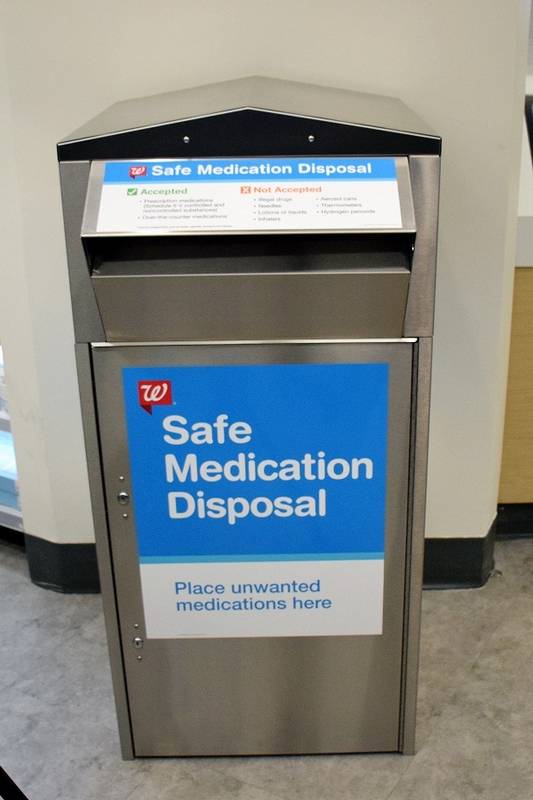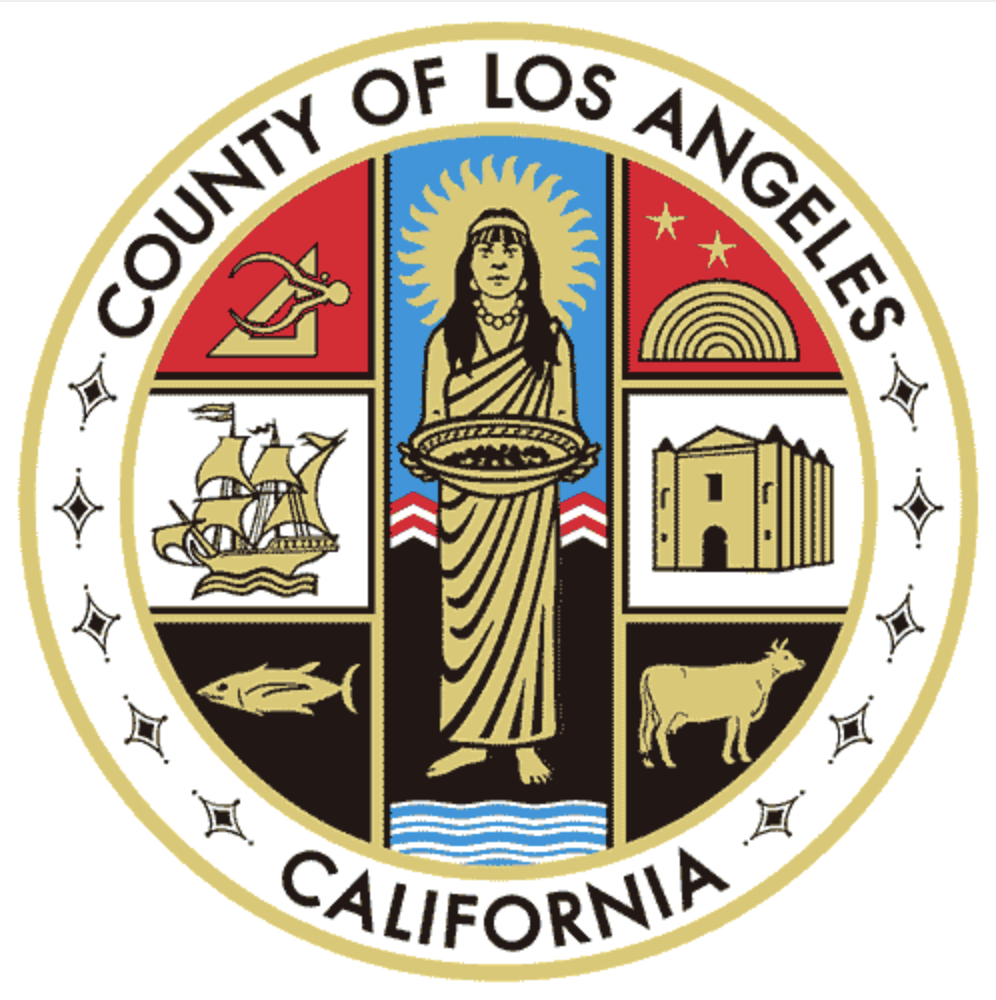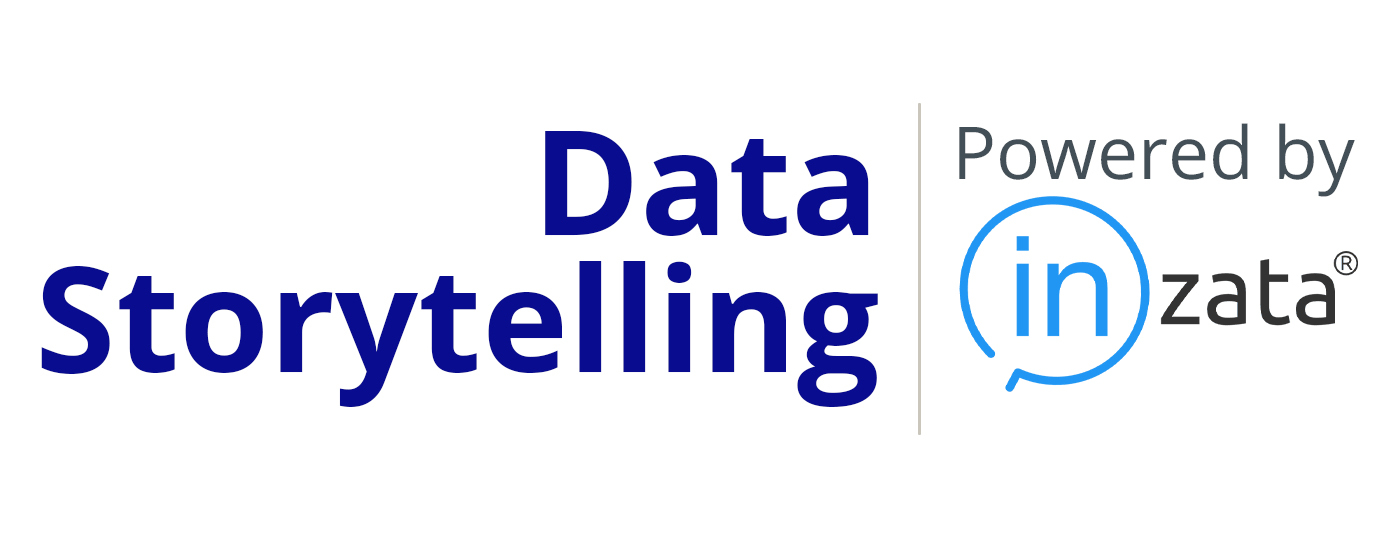Opioid Prescriptions
Prescriptions Dispensed
A large number of patients are prescribed opioids, and many are prescribed in high dosages. In 2010-2021, about 400 opioid prescriptions were filled per 1,000 residents in Los Angeles County (LAC) each year (Figure 1), which is enough to supply a bottle of opioids to over half of all adults in LAC, though the rate has been steadily declining since 2014.
The Antelope Valley region (SPA 1) had the highest rates of opioid prescriptions filled, while the Metro region (SPA 4) had the lowest rates of opioid prescriptions filled in 2021 (Figure 2).
Figure 2. Opioid prescriptions (excl. buprenorphine) per 1,000 residents by SPA, LAC, 2021
Source: CDPH

High Dose Prescriptions
The number of morphine milligram equivalents (MME) per resident per year in LAC was 160 in 2021, which has steadily decreased from 373 in 2014 (Figure 3).
About 6 per 1,000 LAC residents were on high-dose opioids (more than 90 mg MME daily) in 2021, which has steadily decreased from about 25 per 1,000 residents in 2009 (Figure 4).
(Note: MME allows different types of opioids with different potencies to be compared.)
Overlapping Prescriptions
Having overlapping opioid prescriptions, or overlapping opioid and benzodiazepine prescriptions are high-risk prescription regimens.
The rate of LAC residents who had two or more overlapping opioid prescriptions increased from about 8 in 2008 to about 12 in 2014, then decreased to about 4 in 2021 per 1,000 LAC residents (Figure 5).
The rate of LAC residents who had overlapping opioid and benzodiazepine prescriptions increased from about 11 in 2008 to about 17 in 2014, then decreased to about 5 in 2021 per 1,000 LAC residents (Figure 6).
Diversion
Some of the prescriptions are obtained by patients who use five or more prescribers at five or more pharmacies in six months (i.e. “Doctor shoppers”), which may indicate addiction or diversion. Prescribers and pharmacies may not be aware of their patients use of multiple prescribers and pharmacies, which could contribute to a large supply of prescription drugs in the community. The rate of doctor shoppers in LAC decreased since 2014 to low levels by 2021 (Figure 7).
However, prescription opioids are often still easily and widely available in the community, and over half of individuals who misuse/abuse prescription opioids obtain them from a friend or relative (Figure 8).
Since 2016, all licensed prescribers authorized to prescribe scheduled drugs, and all licensed pharmacists authorized to dispense scheduled drugs in California, are required to register for access to the Controlled Substance Utilization Review and Evaluation System (CURES), California’s Prescription Drug Monitoring Program (PDMP). CURES is a secure statewide electronic database that allows for licensed prescribers and licensed pharmacists to access their patients’ controlled substances (Schedule II, III, and IV) history, and is designed to identify and deter drug abuse, fraud, and diversion of prescription drugs without affecting legitimate medical practice and patient care.
Safe Disposal of Prescription Drugs
The US Food and Drug Administration (FDA) recommends immediate disposal of prescription opioids and other controlled substances by flushing. While unused, unwanted, and expired medications should not be flushed down the toilet or put in drains, as these medications eventually enter streams, lakes, and rivers, and can potentially cause irreversible negative consequences to our environment, the known risk of harm far outweighs any potential risk to humans or the environment from flushing these medicines.
Preferably, people can take their unused and unwanted medications to permanent drug take-back locations for anonymous and safe disposal in LAC.
The DEA National Prescription Drug Take-back Events have garnered extensive community participation, collecting hundreds of tons of prescription medications at each event.

As of April 2023, the DEA has conducted 24 National Take Back Days across the United States, collecting over 17 million pounds of prescription drugs and other materials from the community. In California, over 1.3 million pounds were collected at these events.
Collection yields decreased after 2020, possibly due to the COVID-19 pandemic and other factors, but remains high with over 663 thousand pounds collected in April 2023 (Figure 9). In California, over 40 thousand pounds of drugs and other materials were collected in April 2023 (Figure 10).
References
Figures 1-7. California Department of Public Health (CDPH). Controlled Substance Utilization Review and Evaluation System (CURES). https://skylab.cdph.ca.gov/ODdash/
Figure 8. Substance Abuse and Mental Health Services Administration (SAMHSA). National Survey on Drug Use and Health (NSDUH). Table 6.5. https://www.samhsa.gov/data/report/2020-nsduh-detailed-tables
Figures 9-10. Drug Enforcement Administration. National Prescription Drug Take Back. https://www.dea.gov/takebackday.


